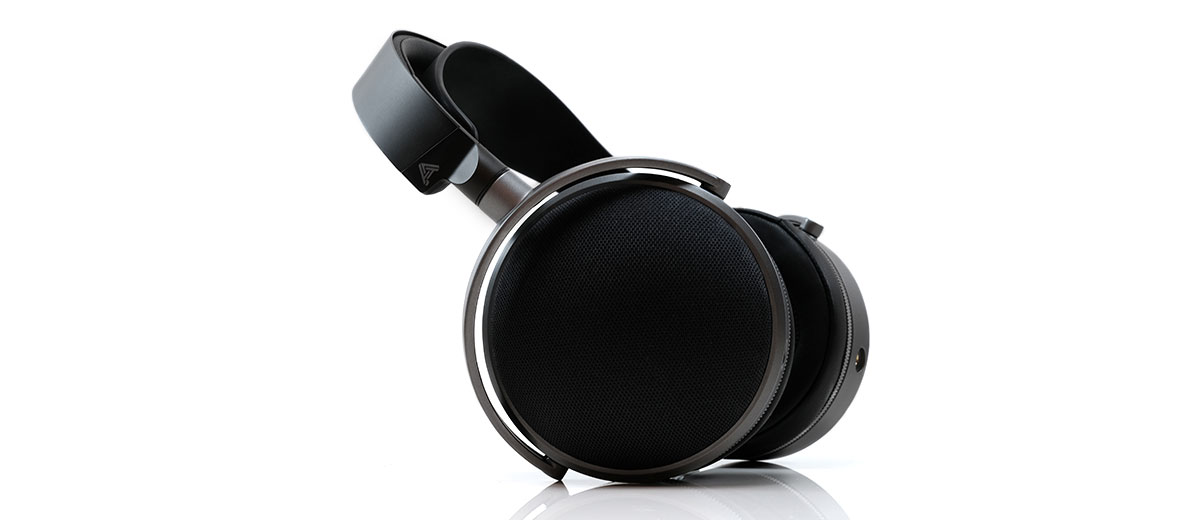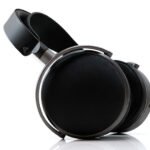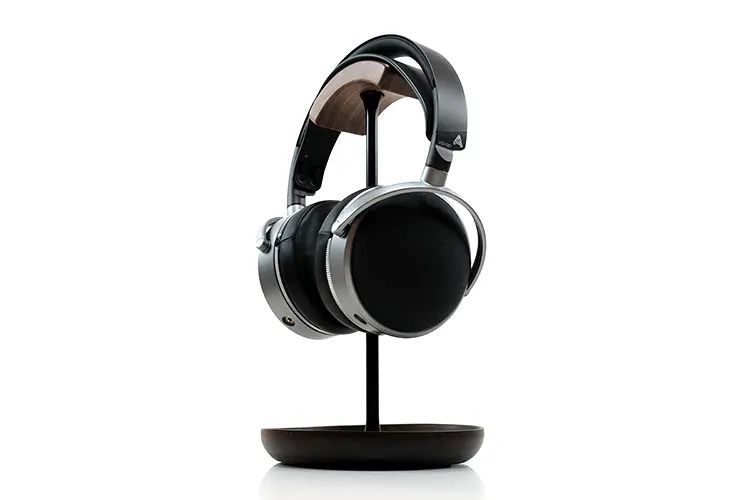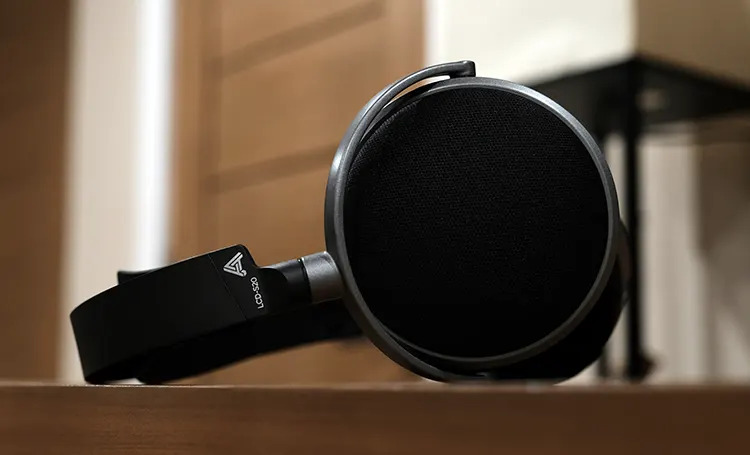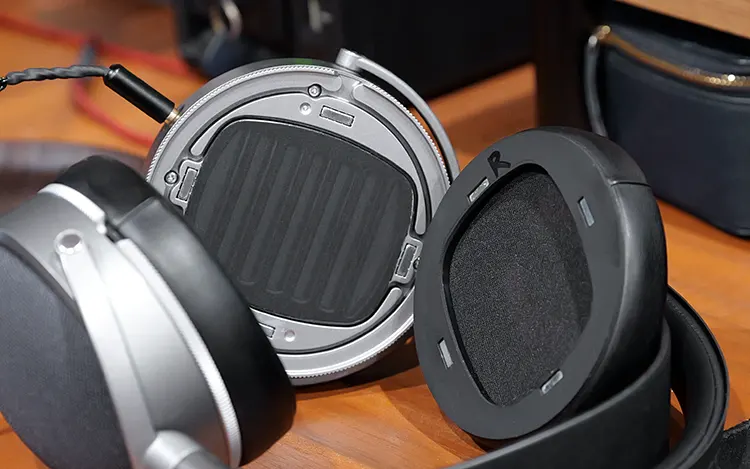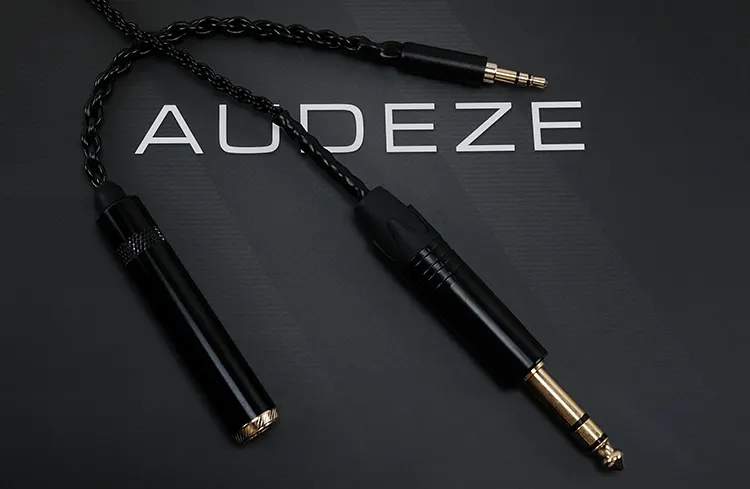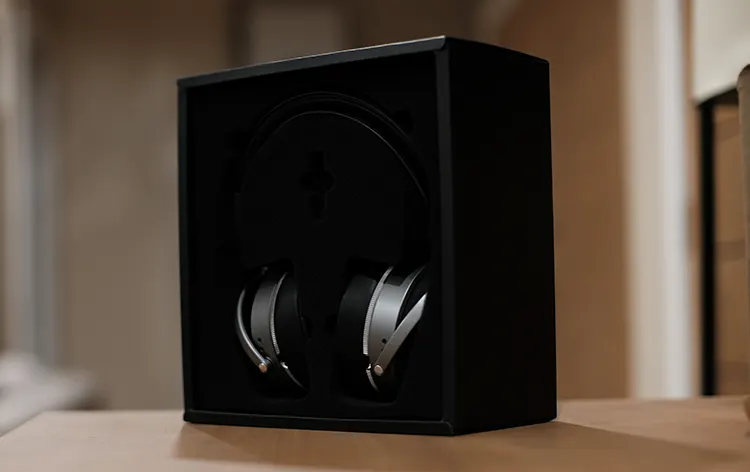Today, Marcus reviews the Audeze LCD-S20, the company’s most affordable set of closed-back LCD series headphones featuring SLAM technology. They have an introductory price of $499.
Disclaimer: I received this sample in exchange for my honest opinion. Headfonics is an independent website with no affiliate links or services. I thank the team at Audeze for their support.
Click here to read more about the Audeze products we have previously reviewed on Headfonics.
This article follows our current scoring guidelines, which you can read in more detail here.
The recently launched Audeze LCD-S20 is the first LCD series headphone since the LCD-1 to dip a cent under $500, with only the wireless Maxwell closed-backs currently cheaper at $299.
Like the Maxwell, this is a closed-back planar headphone and is positioned in Audeze’s Professional Series of headphones alongside the LCD-XC, the MM-500, and the similarly priced open-back MM-100, to name but a few.
The LCD-S20 is also the second headphone to use ‘SLAM’ technology, previously reserved for their uber high-end CRBN2 electrostatic headphones.
Built to a similar style and quality as the MM-100 and debuting Audeze’s first-ever detachable ear pad system, the LCD-S20 offers a weightier, darker sound than its open-back cousin, with decent spatial performance for a closed-back design.
So, how does it differ from the MM-100 open-back or compete with the new Sennheiser HD 620S and beyerdynamic’s venerable studio fav, the DT 1770 PRO? I found out in my full review below.
Features
The Audeze LCD-S20 is a set of closed-back planar headphones with some unique features, but also shares quite a few attributes with the MM-100.
For example, both use what I presume to be the same 90mm planar driver with an Ultra-Thin Uniforce™ diaphragm, combined with Audeze’s trademarked Fazor™ technology and Neodymium N50 magnets in a dual-sided Fluxor™ magnet array.
However, even though the LCD-S20 and MM-100 are both 18Ω rated drivers, their sensitivity levels are different at 93 dB/1mW for the former and 98 dB/1mW for the latter, meaning this latest iteration is going to need more juice to sound optimal.
Unlike the MM-100 (or the Maxwell), the LCD-S20 also gets the top-shelf treatment with the new SLAM technology first seen inside the flagship CRBN2 earlier this year.
In short, SLAM enhances the LCD-S20’s low-end response below 100Hz with a bit of a boost without introducing unwanted distortion and closed-cup bloom.
Some will call this a bass port, but it is much more than that. If you pull off the pads, you will see a ‘grippy’ silver plate at the front of the driver assembly with several fine-tuned physical channels and 2 large venting ports on either side.
These act as a conduit between the pads and the driver to relieve pressure and acoustically modulate or cleanly boost the low-frequency response of the LCD-S20 driver.
Design
The LCD-S20’s design language has a high degree of familiarity with a sleek and beautifully built frame, similar to the MM-100 and Maxwell, combined with a dark fabric-finished cup and a comfortable but slightly thicker pressure strap system.
Audeze has hit gold with this type of build quality at this price point, so it makes sense to continue using it.
You will not find any cheap plastics here. The LCD-S20 is built primarily from a solid mix of magnesium, aluminum, and spring steel and finished in an attractive mix of gunmetal and silver.
The only plastic on the LCD-S20 is the headband, which is finished (and branded) in a similar color to the rest of the headphones, so it does not stand out.
That does make it somewhat heavier than you might expect, at 550g, for an otherwise relatively compact set of headphones.
Bear in mind that it is 75g more than the open-back MM-100, which uses the same materials, so one has to presume the majority of the additional weight is in the closed-cup facade behind the cloth cover and the additional SLAM ring.
The construction is excellent, with no creaking noises to be had anywhere when articulating the joints. However, I did note that the amount of swivel is reduced from the MM-100’s 180-degree equivalent. Though the latitude of the swivel is good, it is not a lay-flat type of headphone.
Comfort & Isolation
The LCD-S20 weighs 550g, so it’s not that light. However, the adjustable pressure strap system and degree of articulation in the cups mean it delivers a pleasingly balanced level of pressure on my head and impressive passive isolation.
For a closed-back headphone, the clamping is not excessive either, and with a new magnetized detachable pad system, the fear of these pads wearing out and not being able to easily change them is gone.
I wonder if we will see velour or perforated options in due course. Maybe some choices that could change the tuning?
Changing the pads is dead easy. Just slip your finger around the venting port on the side of the cups near the gimbal and push up rather than pull the pads by the synthetic leather itself.
Audeze has marked each pad with L and R on the inside, though I’m not sure if that is a permanent feature, as my sample has the letters done with a permanent marker.
The new detachable wedge pad structure has the same gel-filled inner structure as the MM-100’s pads, so these are good pads overall. However, the shape and size of the inner opening have changed slightly, slightly diminishing the comfort relative to the MM-100 pads on my head.
The external diameter and shape are unchanged, but there is now a narrower inner contact surface, which results in a wider inner opening that clears more of your ear than the MM-100.
That narrower contact pressure point is more noticeable on my head, and after an hour or two, I also noticed a bit of sweat buildup from the synthetic leather materials.
Also, the inner cavity depth of the new pads is a little shallower, though I never found my ears brushing up against the driver baffle during my testing.
Stock Cable
The Audeze LCD-S20 has the same cable and connection system as the MM-100. I considered that quite a good setup in my previous review, so it stands to reason I will think the same here.
This is a dual-entry 3.5mm TRS connector socket system embedded into the magnesium cups but with a small, protected wire connecting the two cups and drivers. That means the LCD-S20 can also be used as a single-sided headphone.
With the stock cable coming with a single 3.5mm TRS stereo jack connector, you can connect it to either cup, and it will operate as intended. Given the LCD-S20’s Pro audio slant, it should be useful for cable management in studios and keeping it out of the way during work.
Aesthetically, the 2.5m high-purity OCC audio-grade copper wire stock cable is identical to the MM-100 version with a shiny, tight PVC double-braided jacket and pro-styled 6.35mm connector. Since this cable is single-sided, it has no splitter barrel, which reduces a bit of weight.
You also get a similarly black barreled 6.35mm to 3.5mm piggy-tail converter accented with the Audeze branding in white.
Packaging & Accessories
The LCD-S20 unboxing experience is professionally finished but fairly stripped down, with even fewer accessories than the MM-100.
The packaging is almost identical: a mid-sized cardboard container with low-profile Audeze branding and the headphones slipped inside a deep, presentational foam and fabric layer.
Underneath the foam layer is a box containing the cable, warranty, and user manual cards.
Sadly, there is no MM-branded cloth pouch inside the box, which would have been a nice addition to give the headphones some level of protection when not being used.
I suggest going online and buying a Geekria hard case for about $30 as they are a perfect fit for the LCD-S20 and cable.
Click on page 2 below for my sound impressions and recommended pairings.

